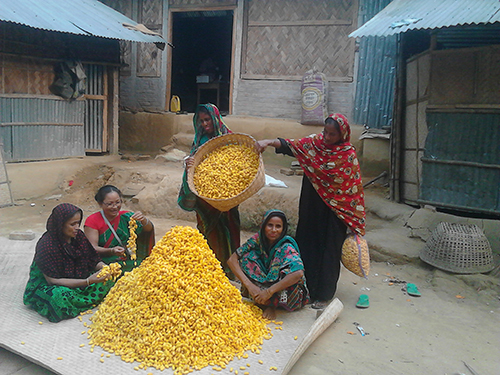
RAJSHAHI, Sept 30, 2024 (BSS) - Bangladesh Silk Development Board (BSDB) has been working to revive the lost glory of the traditional silk sector after the best uses of existing natural resources in the region, including its vast Barind tract.
Since the immemorial time, Rajshahi has been famous for silk but its legacy was on the verge of waning for the last couple of decades due to various reasons.
Many rural people had got the path of improving their living standard through boosting local silk yarn production.
Once upon a time, most of the villagers were seen farming silkworm sericulture side by side with their regular household activities in Bagha and Charghat upazilas in Rajshahi and Bholahat upazila in Chapainawabganj districts.
But, the glorious situation can be revived after the best use of existing natural resources. There are enormous scopes of generating employment opportunities along with improving living and livelihood conditions of the marginalized and landless people, particularly women, through engaging them in sericulture.
"We intended to boost the capacity of the targeted people through imparting them with training in different stages of sericulture," said Anwar Hossain, Director General (DG) of BSDB, while talking to BSS at his office here recently.
Formulation of a reform proposal consisting of all the existing potentialities is progressing to infuse dynamism into silk production activities.
In addition to the modernization of the sericulture nurseries, initiative has been taken to boost the production of mulberry plants and cocoons in Ishwardi, Rangpur, Cumilla, Konabari and Bogura nursery centres.
They are also planning to meet the country's demand by enhancing the production of silk cocoon and raw silk. Initiatives have been taken to expand sericulture through farming methods aimed at increasing silk production on a commercial basis.
At present, there are 2,131 mulberry farmers, 1,639 cocoon farmers and 13.14 lakh mulberry plants in 468 blocks and 30 ideal villages.
"We are extending financial support to all the grassroots farmers through 59 centres," said DG Anwar Hossain, adding that there are also arrangements of extending support to those engaged in silk cocoon, yarn and mulberry farming and silk industries besides marketing of silk products.
They are encouraging the farmers towards mulberry farming as the main crop with the ultimate goal of boosting silk production. Currently, mulberry plants are being cultivated on homesteads and roadside vacant places.
Around 23 ideal sericulture villages were established in the potential areas as a model to improve the capacity of small and marginal farmers to establish high-yielding mulberry gardens and produce superior-quality silk cocoon.
The multidisciplinary activities provide unique job opportunities to the marginal farmers, landless poor, rural and contribute a lot to poverty reduction, he added.
Emdadul Bari, Member (extension) of BSDB, said the prospect of intercropping is very bright to boost additional income from the same land together with silk cocoon production throughout the region.
Intercropping mulberry trees with some other vegetables and spices is being promoted among the farmers aimed at uplifting silk production.
The prospect has been increased with the extension of mulberry cultivation on around 8,000 hectares of land including roadside plantations throughout the country for the last couple of years.
Actually, the mulberry is cultivated for silkworm rearing and production of silk cocoons.
The mulberry cultivation is more or less dependent on the fallow lands and other roadside mulberry plants without proper management practice at present.
The research outputs were positive relating to the production of spices, vegetables and mulberry leaves along with attaining food security.
Muhammad Liakat Ali, President of Bangladesh Silk Industries Owners Association, utmost emphasis should be given on full-fledged resumption of the Rajshahi and Thakurgaon Silk Factories for reviving the prestigious silk sectors.
He said," There are around 80 small and medium silk factories in the private sector with a capacity of manufacturing 25.50 million meters of fabrics annually."
Apart from this, there are about 10,000 private handlooms with a capacity of producing 30 million meters of silk fabric. But the factories are dependent on imported yarn.